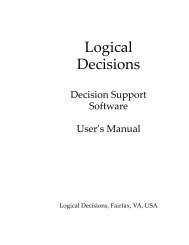AFTER VIOLENCE: 3R, RECONSTRUCTION, RECONCILIATION ...
AFTER VIOLENCE: 3R, RECONSTRUCTION, RECONCILIATION ...
AFTER VIOLENCE: 3R, RECONSTRUCTION, RECONCILIATION ...
Create successful ePaper yourself
Turn your PDF publications into a flip-book with our unique Google optimized e-Paper software.
chronologically. To the four cases mentioned more could be added,<br />
like the mass killing of Armenians, the allied carpet bombing in<br />
Germany, violence during the Chinese cultural revolution, and<br />
others (not Italy, interestingly)/40/. The basic theme is this:<br />
imagine we want to allocate a certain amount of guilt, given the<br />
horrors of genocide. Shall we allocate it to actors ("who") or to<br />
culture/structure ("what")?<br />
Nanking is less known, so let us focus on that one.<br />
According to Shi Young & James Yin/41/, the Imperial Japanese Army<br />
killed more than 360,000 civilians (369,366 according to burial<br />
records and census data (before the population was between 500 and<br />
600,000, after only 170,000) in a frenzy of rape and bestial<br />
killing, 14 December 1937 to March 1938; "soldiers and units freed<br />
by their superiors to murder at will for what they believed was<br />
the greater glory of Japan and the Emperor".<br />
In his foreword Archbishop Desmond M. Tutu, chairperson of<br />
the South African Truth & Reconciliation Commission, admonishes<br />
people not to sweep facts under a carpet, like the politician<br />
Ishihara tried to do in an interview in Playboy/42/: "People say<br />
that the Japanese made a Holocaust there (in Nanking) but that is<br />
not true. It is a story made up by the Chinese." And Tutu adds<br />
"I am pleased to be associated with this book - as I believe it to<br />
be an instrument of reconciliation", with Truth as an<br />
indispensable condition.<br />
But the Japanese Ministry of Education tried to evade the<br />
issue in school textbooks, so it had to be brought to light by a<br />
Japanese historian Kenji Ono who visited hundreds of aging<br />
soldiers in the prefecture where the 65th regiment of the 13th<br />
36
















